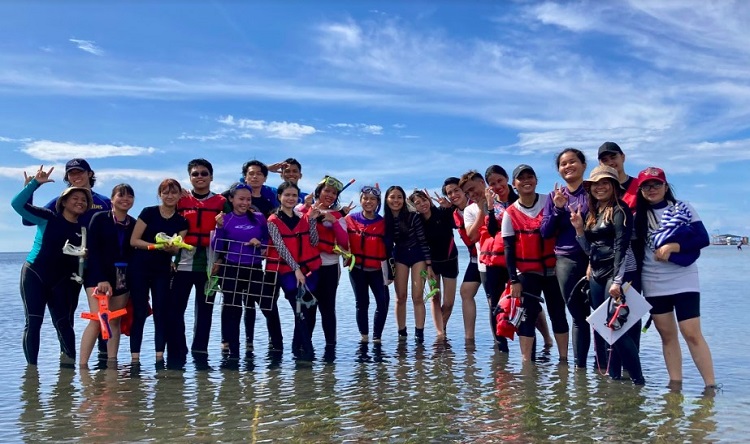
Writers: MMC Interns SY 2021-2022
Students of the internship program of the Xavier University – McKeough Marine Center (XU-MMC) conducted scientific monitoring of mangroves at Brgy. Bonbon, Cagayan de Oro City and seagrasses and macroinvertebrates at the beach side of Laguindingan, Misamis Oriental as part of their field exposure activities.
Started in July 2022 during the summer term of the school year, XU-MMC offered a Summer Internship program for the incoming fourth year BS Biology and Marine Students of Xavier University - Ateneo de Cagayan. The Internship Program is done to provide experiential learning platform to marbio/bio students and encourage potential and future experts to do marine science works and research. Also this program is part of the sustainability action of the office in relation to the newly accomplished project related to mangroves (MANGREBAY project) in which data gathered from the activities will assist MMC in addressing coastal related issues in the local areas.
By the end of the term, students are expected to learn how to coordinate with partners and stakeholders from within the community including external funders, LGUs, and POs for the implementation of project activities. They are also exposed to different fieldworks and laboratory works. Blogs or short online articles are also required from the interns. In addition, they are expected to perform raw data analysis after each fieldwork is done. Lastly, at the end of the course, final results and concept paper must be presented to the whole class.
One major activity was assessment of mangroves at Bgry. Bonbon,Cagayan de Oro City, where a total of 21 students were deployed onto the field under the supervision of Ms. Fae Ucat and Ms. Josephine Bibal. These 21 students were divided into two groups, each accompanied by one supervisor. One group was composed of 10 students (Group 1), handled by Ms. Bibal, and the other of 11 students (Group 2), handled by Ms. Ucat. Each group was then sent into different mangrove areas of the barangay. The groups successfully completed an ecological assessment of their respective areas through the use of the transect-quadrat method. A total of 7 quadrats were set up (1st transect - 3 quadrats; 2nd - 2 quadrats; 3rd - 2 quadrats) in the area. On each center of the quadrat, the specific coordinates were determined using a GPS device called GeoCam. Members of the group then measured the girth at breast height of each mangrove tree as well as its estimated crown cover at percentage and the number of seedlings and saplings per species found in these quadrats. Moreover, the group also collected water samples to be analyzed in the laboratory during the following session.
Another major activity is when the students converged to conduct a seagrass assessment at a beach in the municipality of Laguindingan, particularly at Tiquiano’s Beach Resort in Campo Tubajon. The resort is a recreational spot with a stunning view of the sea and a clean shoreline. This assessment was done under the supervision of the assistant researchers of the XU-MMC, Ms. Fae Ucat, and Ms. Josephine Bibal. 21 interns were split into two groups to survey the area using the transect quadrat method at distant positions. Different species of seagrasses and macroinvertebrates on a quadrat were identified, estimated, and recorded, and the other marine organisms that have inhabited have been noted.
Overall, the field activities were tiring but, at the same time, very rewarding one to experience. The current pandemic has set us all back in terms of opportunities of being outdoors without any worries. Thus, despite all the obstacles experienced during the field exposure–the heat, waist-deep murky waters, and thick mud, the interns still managed to pull through and enjoyed the activity since for the first time in 2 years, they have experienced once more what both Biology and Marine Biology students have been deprived of–that is, to be one with nature and appreciate the beauty in its entirety. As the team of students concluded their field exposure activities, they were able to enrich themselves with the learnings of on-site assessments. Truth be told, it is not always enough to learn the concepts taught during lecture sessions. One must be able to apply these concepts in the field in order to better equip oneself in future obstacles. For now, the interns may as well be considered amateurs. However, with constant application of the concepts and further training, the students may be honed into more experienced individuals who are masters at their own crafts and push themselves to their limits in order to constantly be better versions of themselves.
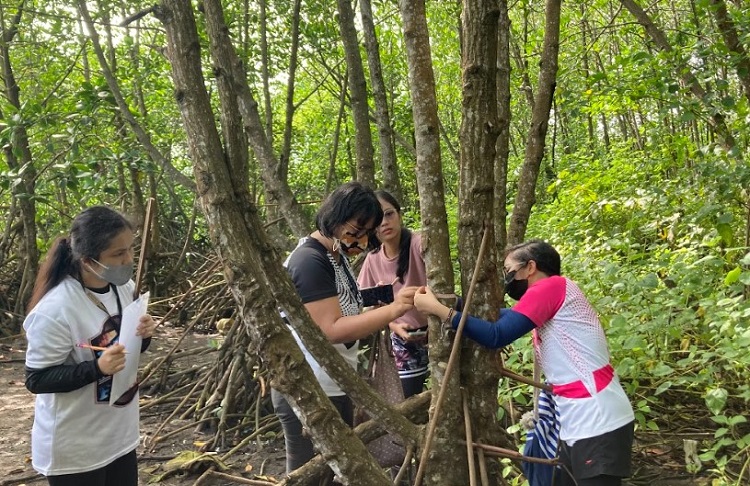
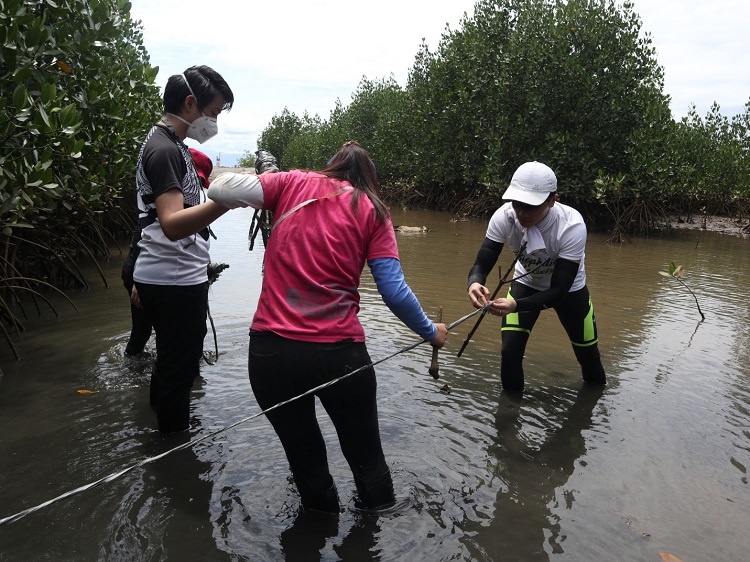
Interns during the assessment of mangroves at Brgy. Bonbon, Cagayan de Oro City.
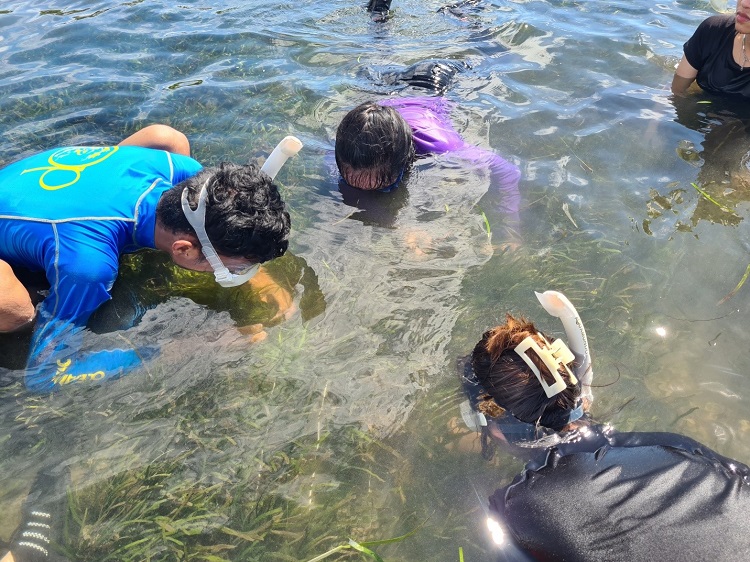
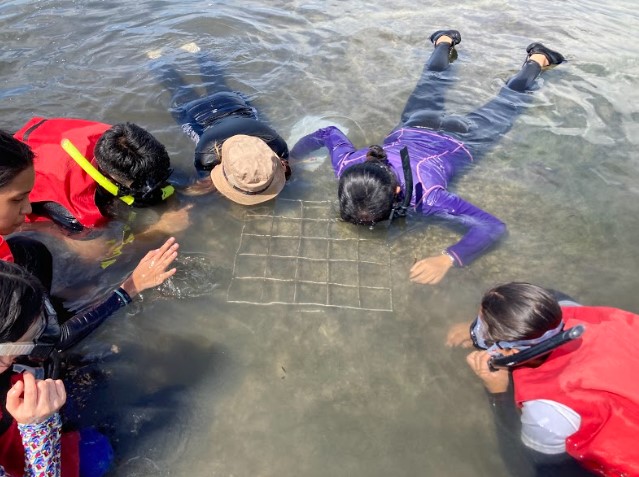
Interns during the scientific monitoring of the seagrasses at Laguindingan, Misamis Oriental.